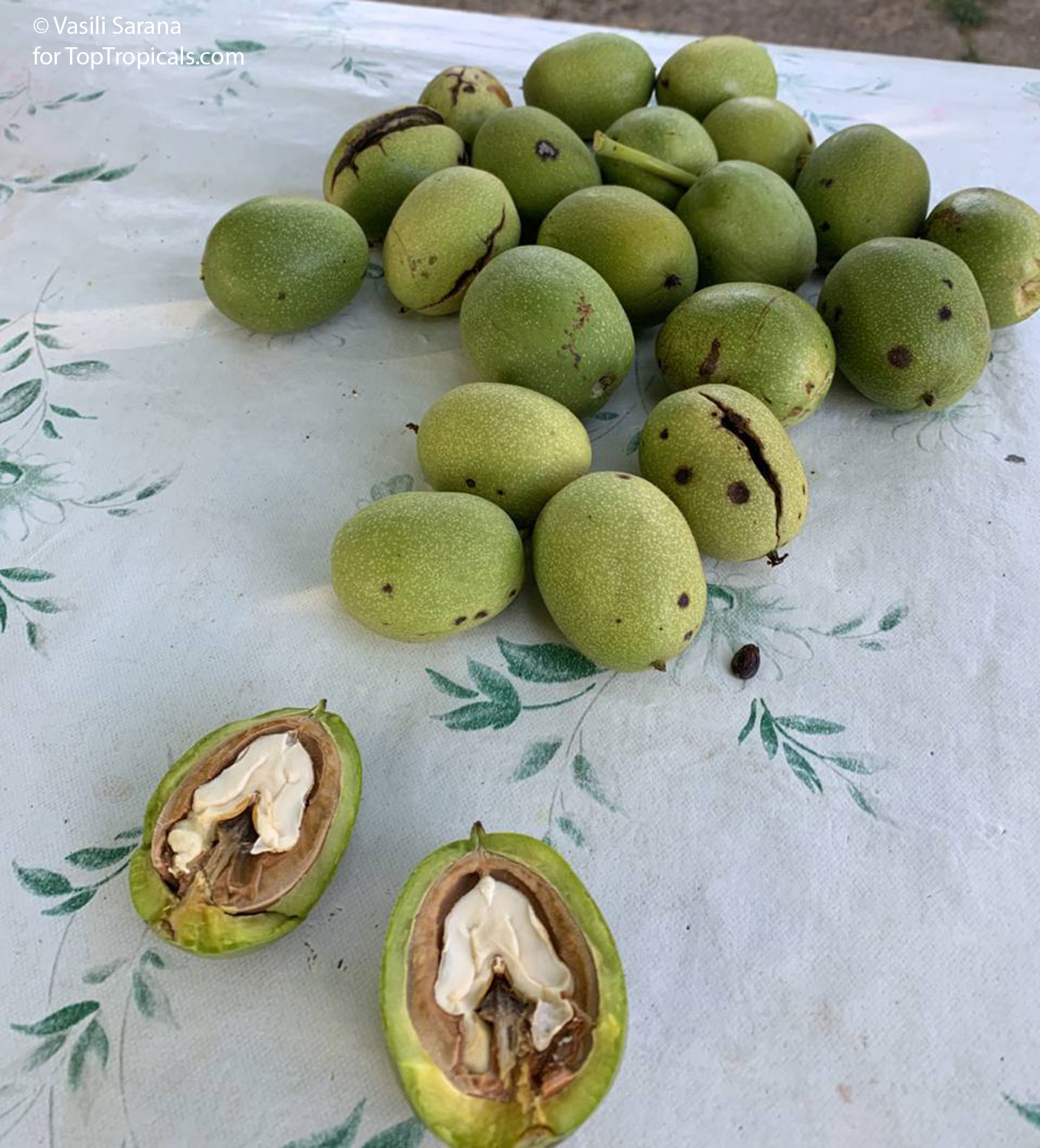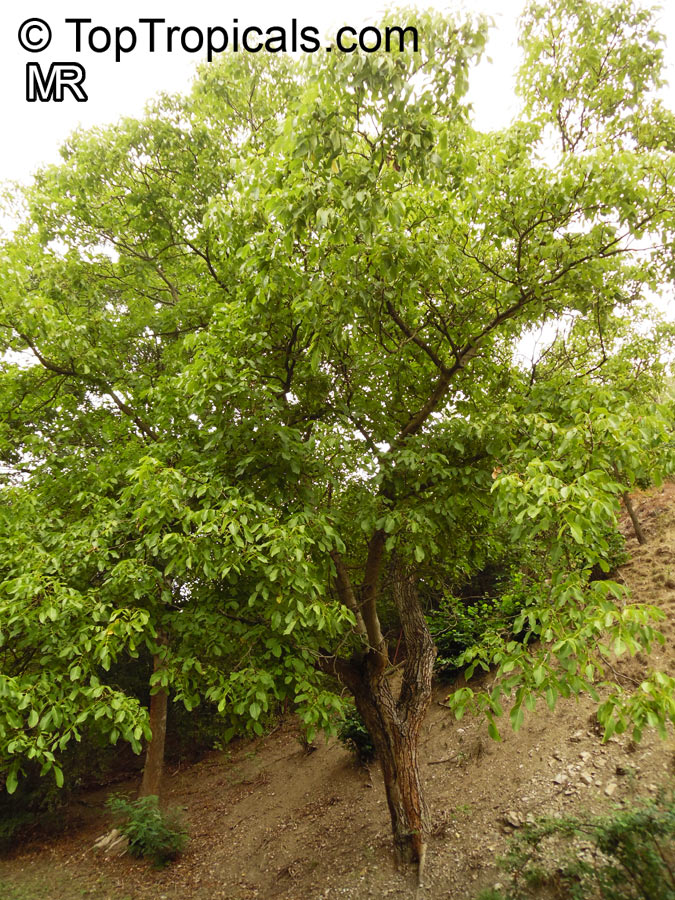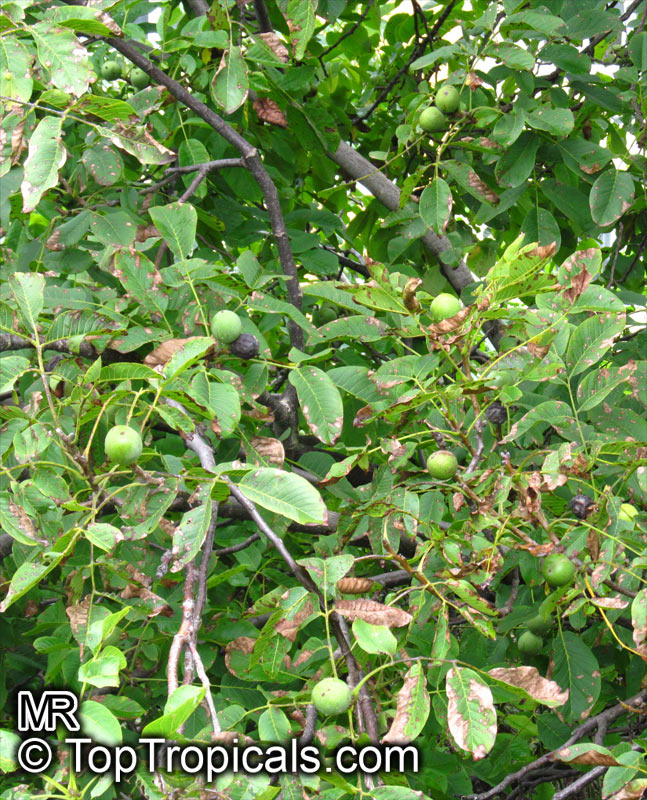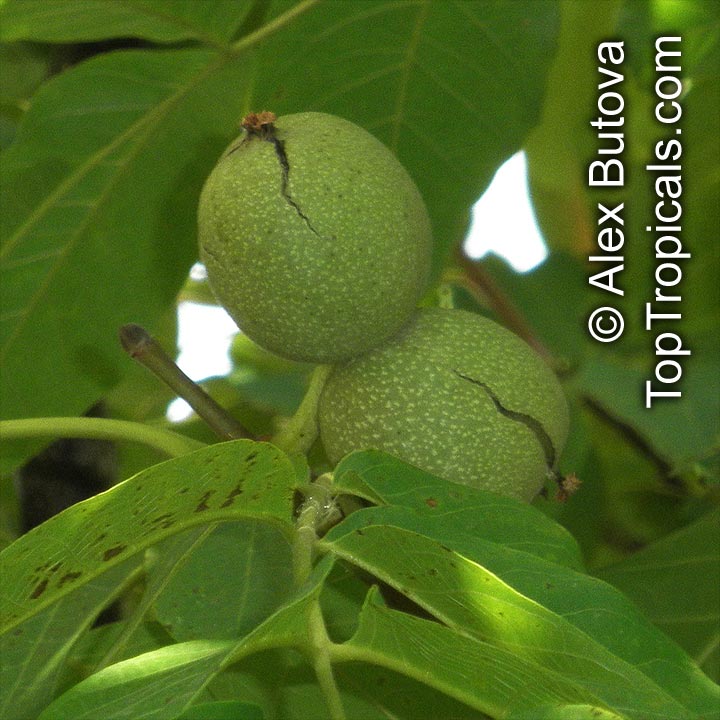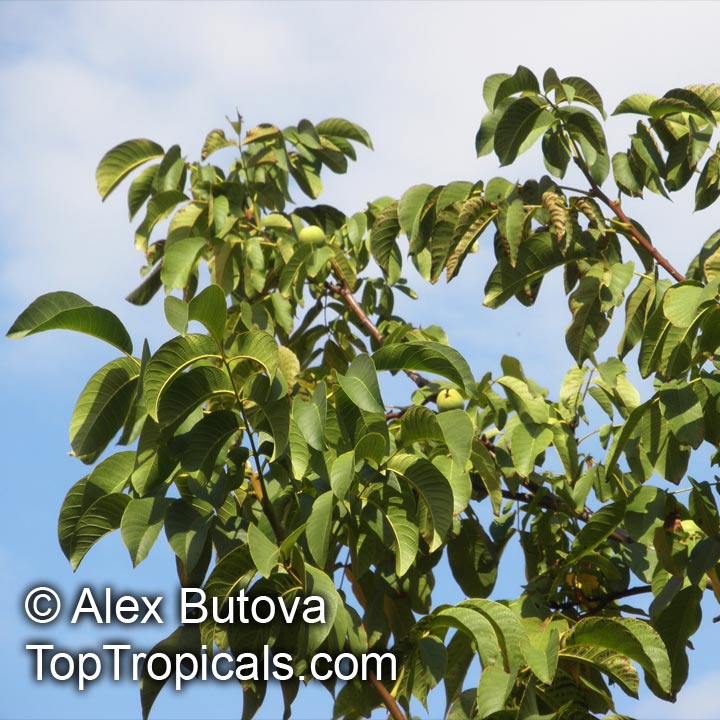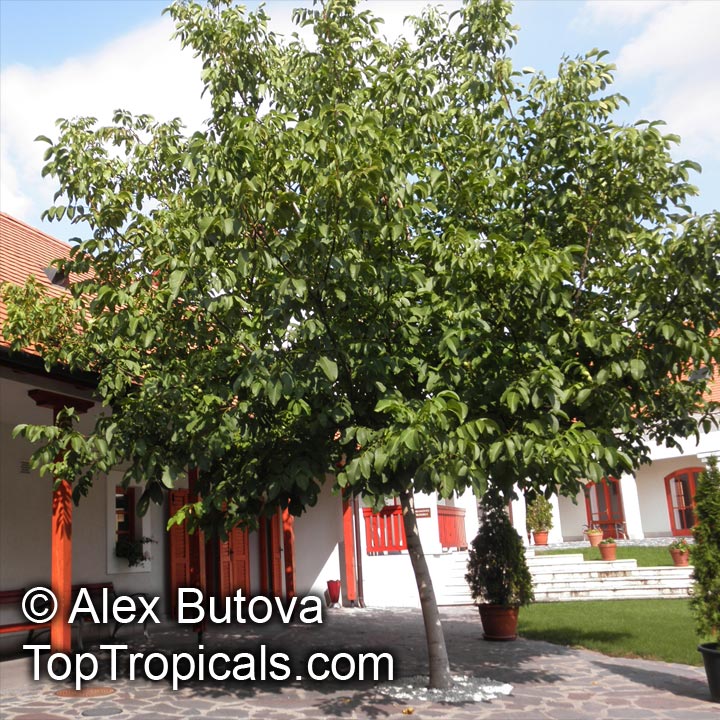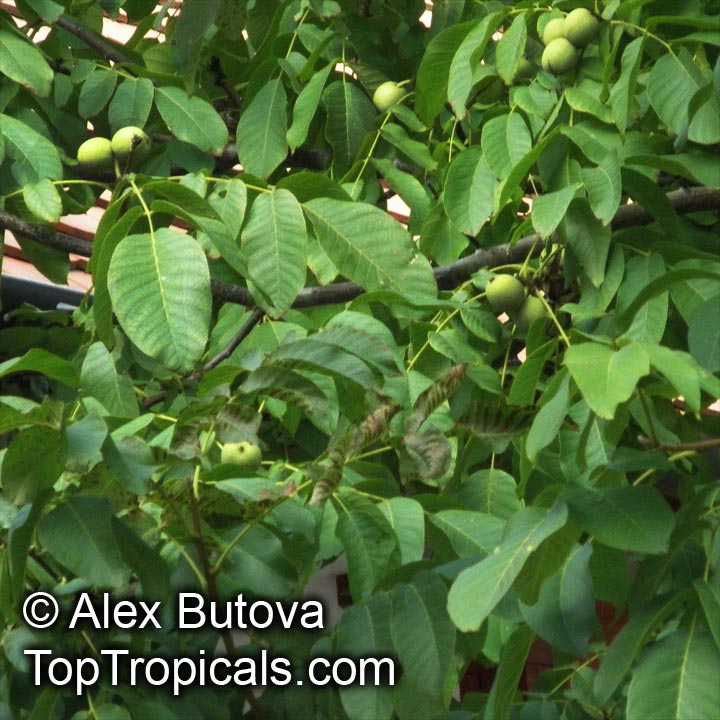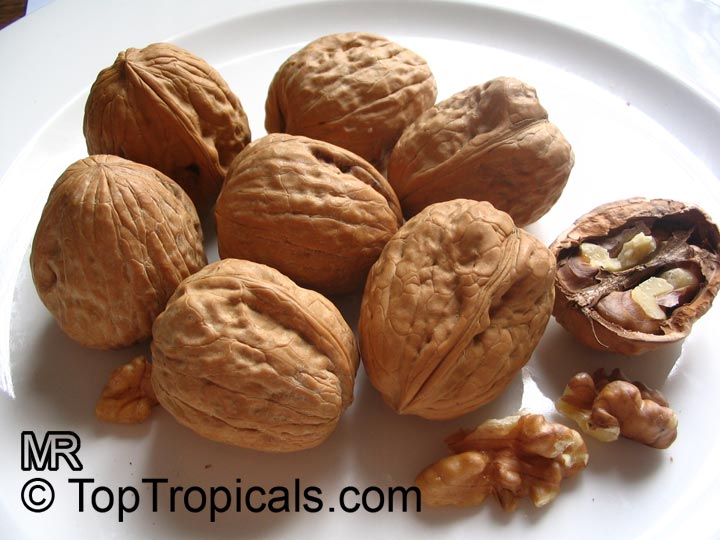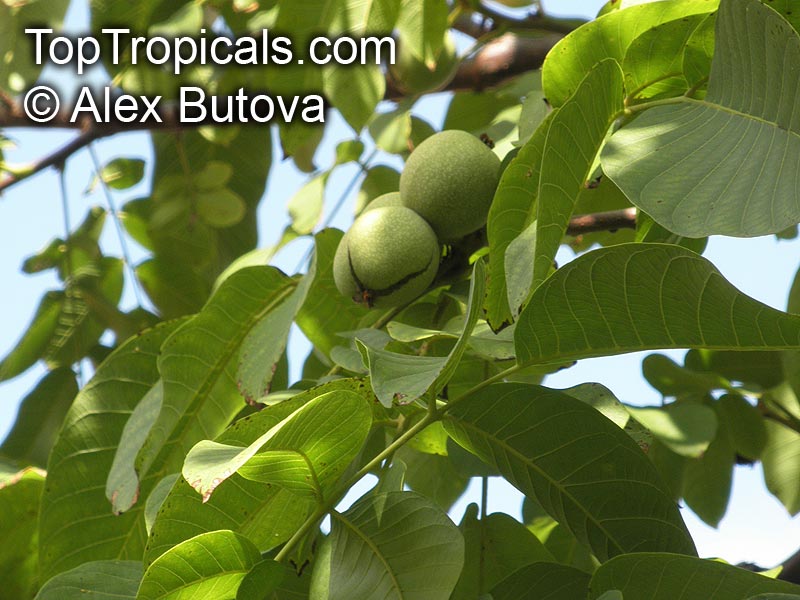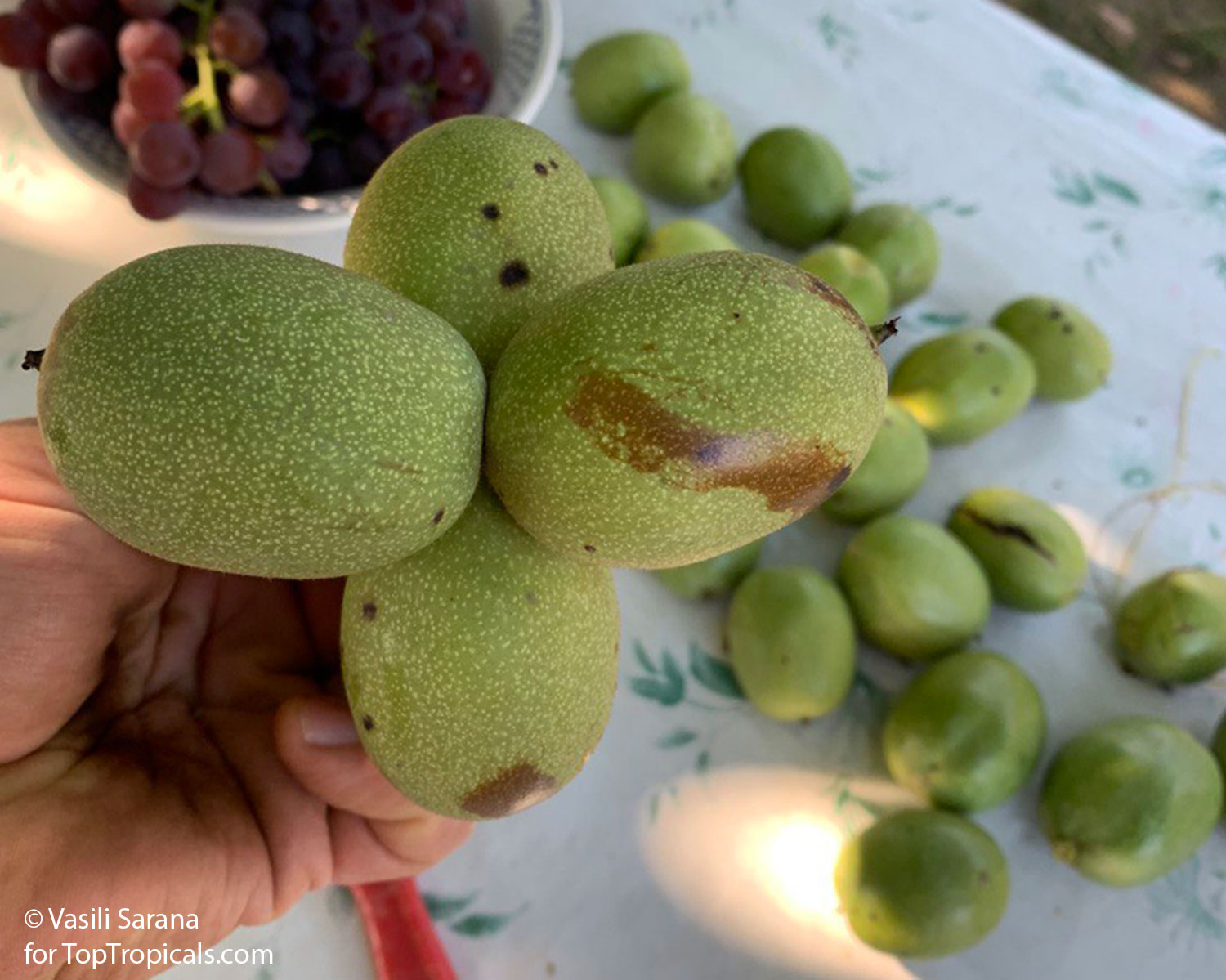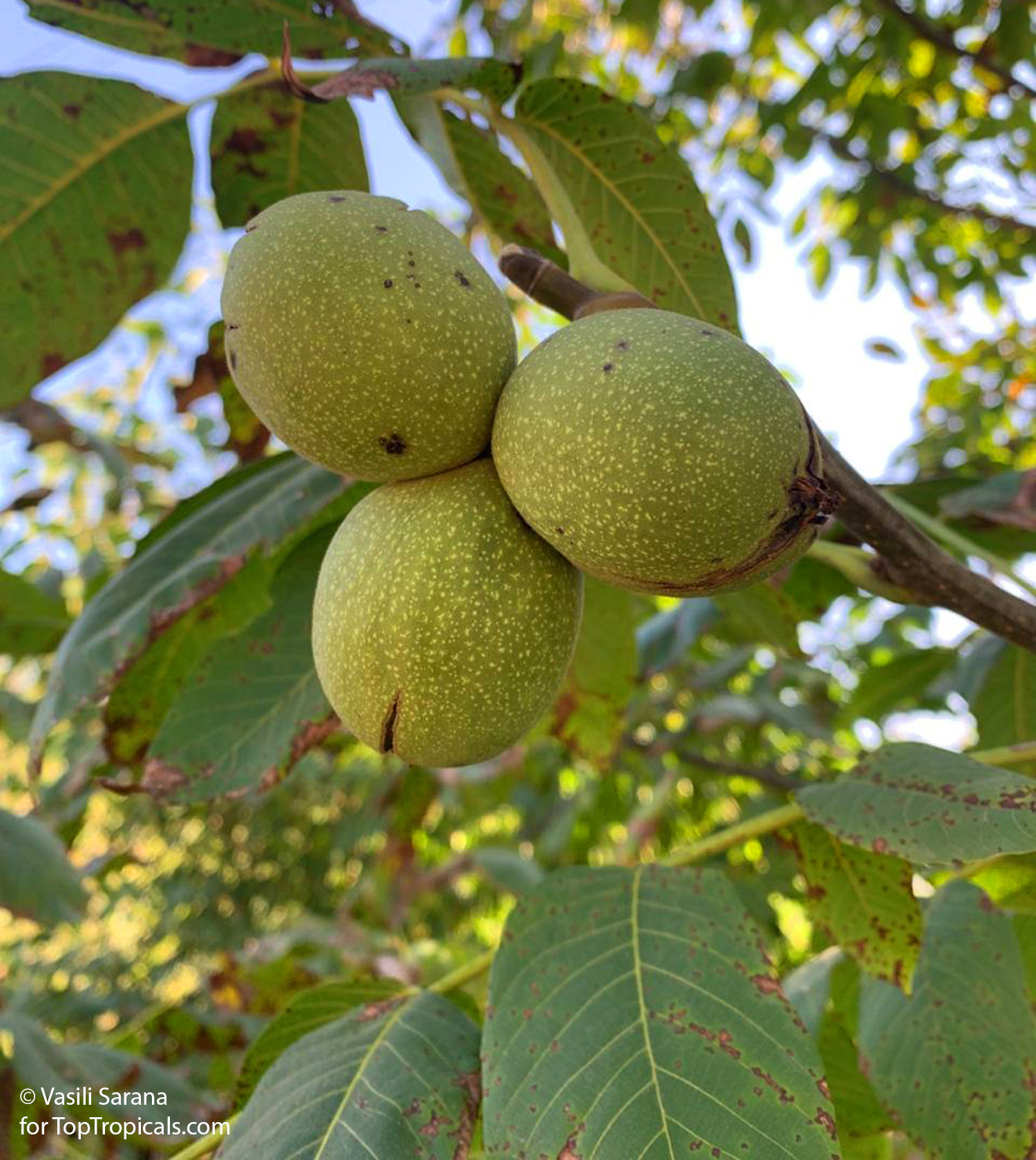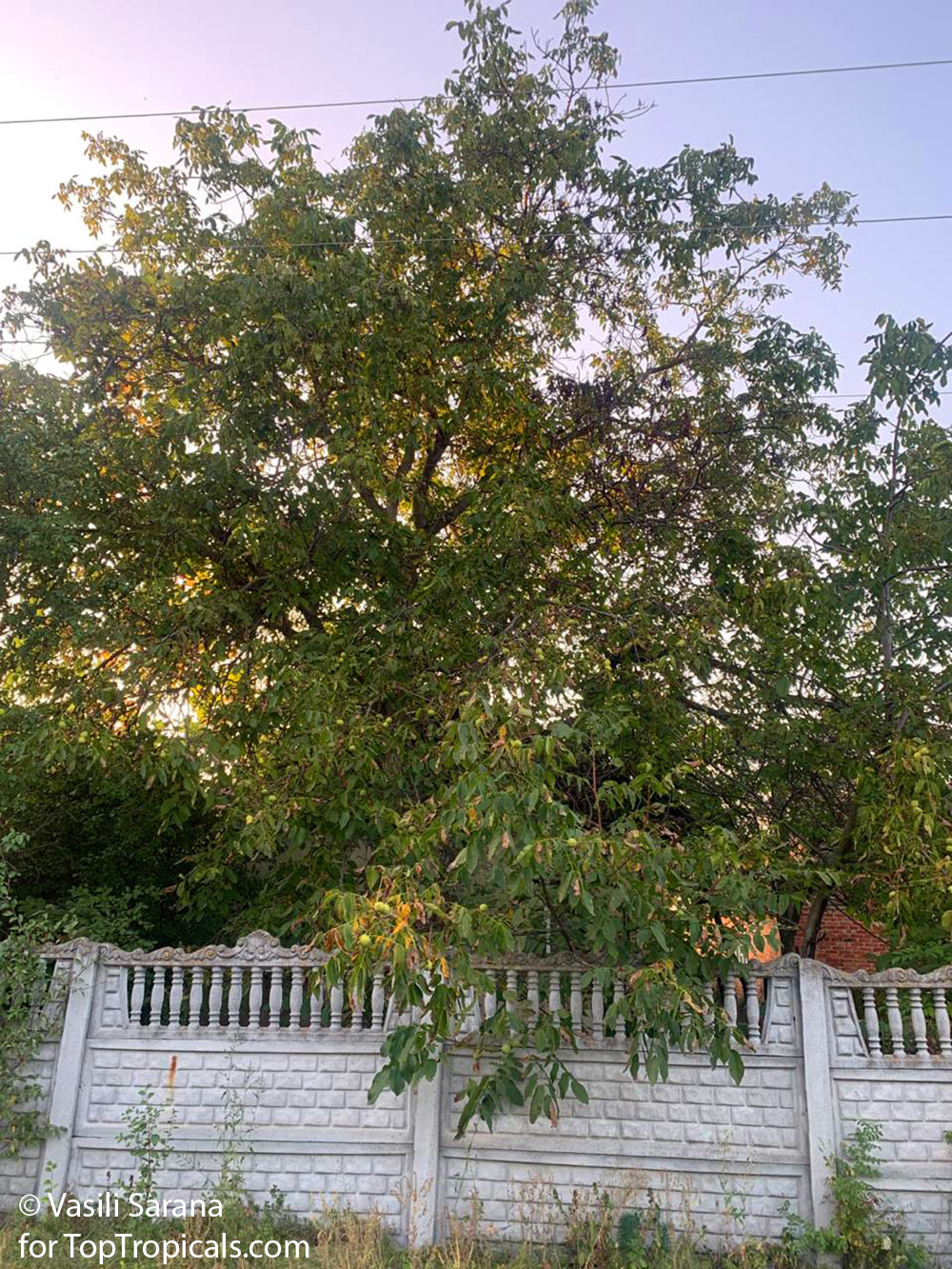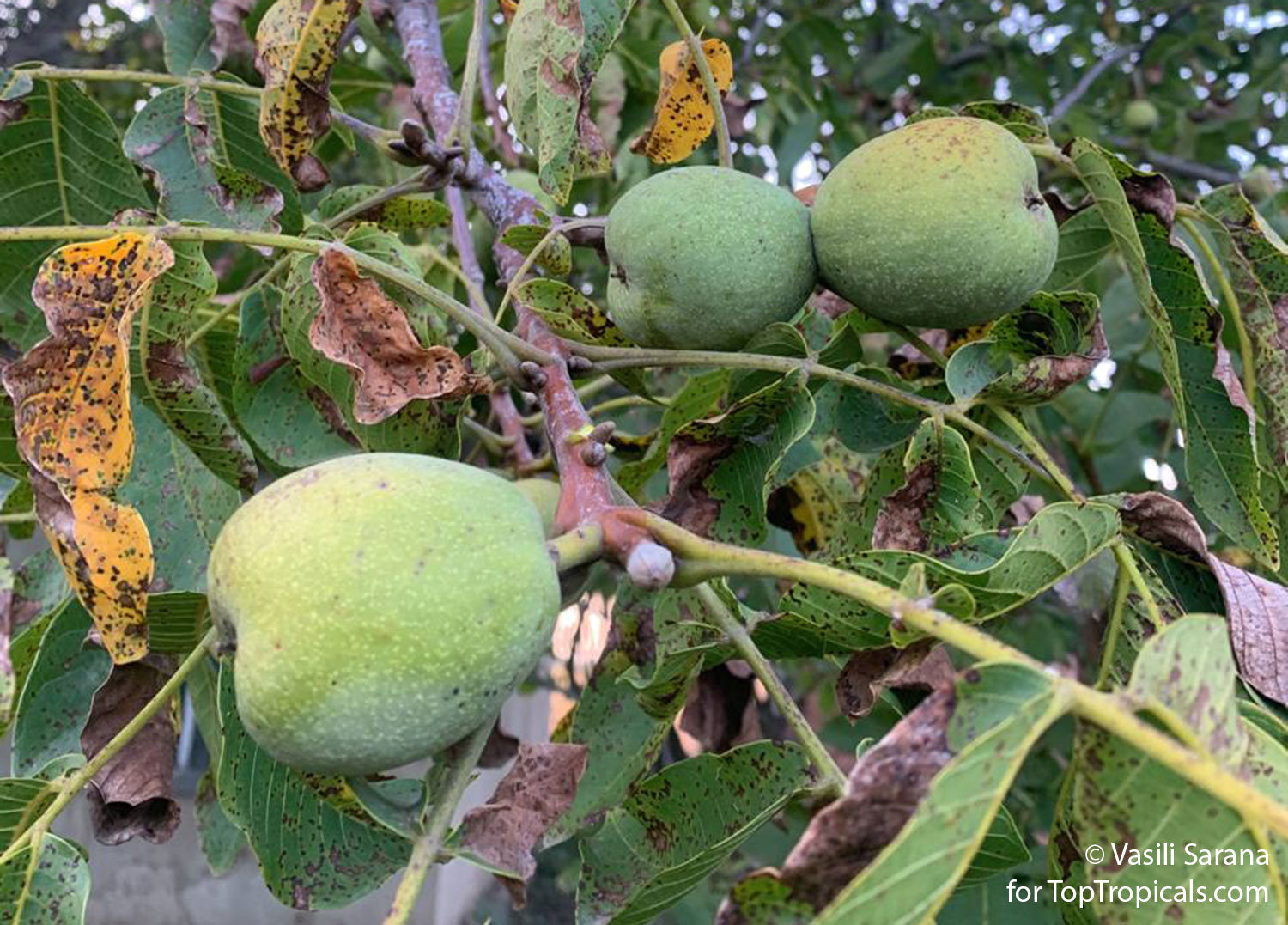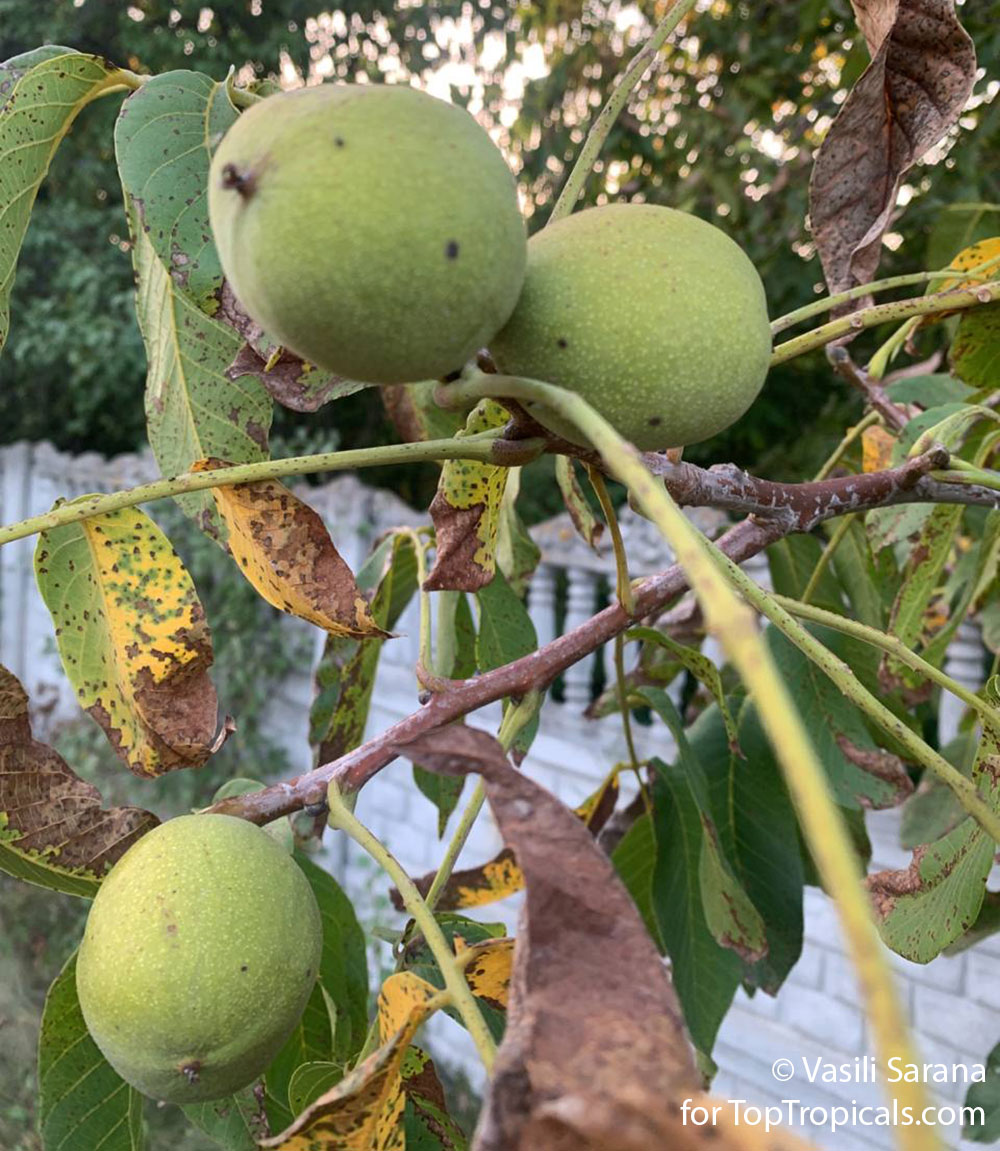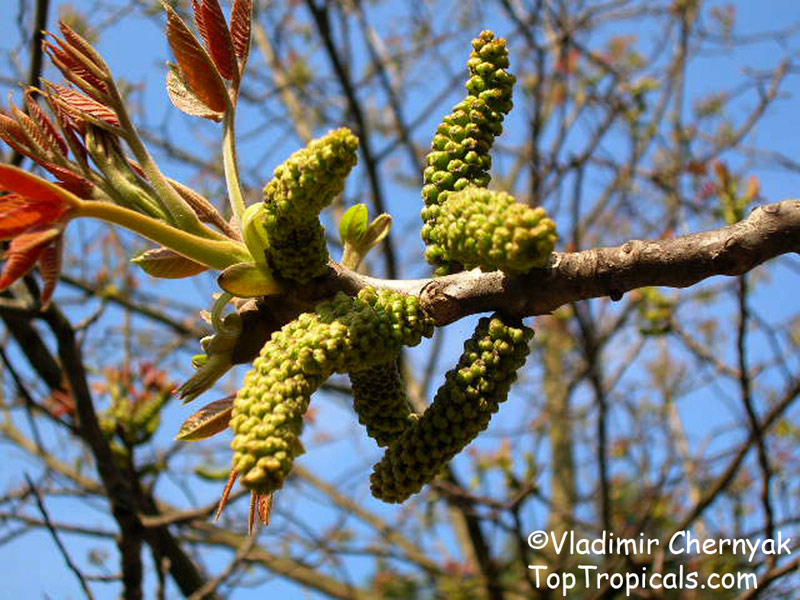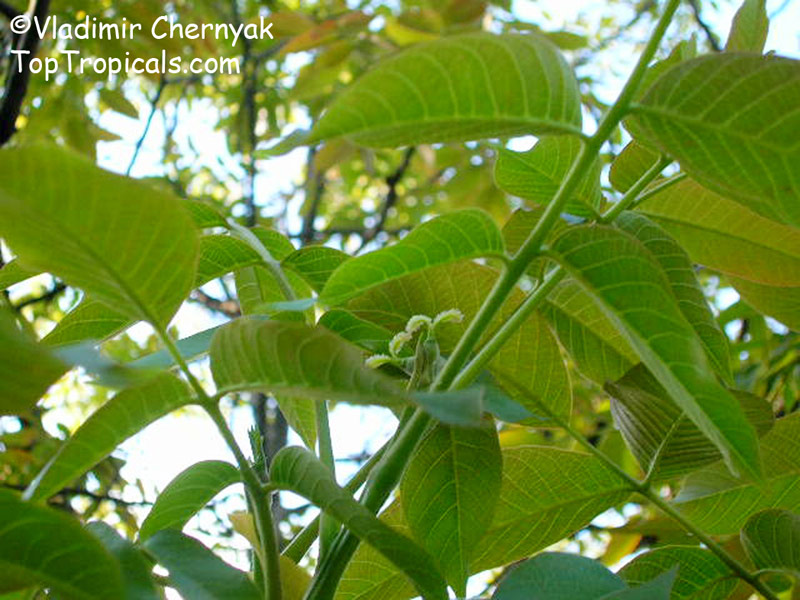Juglans regia (Persian Walnut)
Top Tropicals Plant Encyclopedia
Botanical name: Juglans regia
Common name: Persian Walnut
Family: Juglandaceae
Origin: Central Asia







The Persian Walnut, also known as the English Walnut and Carpathian Walnut, is a majestic tree famous for its tasty and nutritious nuts. It's a valuable addition to gardens and orchards, offering shade, beautiful foliage, and a delicious harvest. With proper care, it can flourish for generations to come.
The Persian Walnut, known by different names like English Walnut and Carpathian Walnut, is a splendid tree with a rich history. It's famous for its tasty nuts, which are enjoyed worldwide. These trees are quite impressive, growing up to 50-100 feet tall with a sturdy trunk and a broad canopy of green leaves.
Leaves:
The leaves are large and pinnate, which means they have multiple leaflets arranged along a central stem. They're a vibrant green color and provide ample shade during the hot summer months.
Fruits:
The Persian Walnut tree produces delicious nuts, encased in a hard shell. These nuts are not only tasty but also packed with nutrients. They're used in baking, cooking, and as snacks.
Habitat:
You can find Persian Walnut trees in many parts of the world. They thrive in temperate climates with well-draining soil. These trees are often grown in orchards and home gardens.
Cultural Significance:
The Persian Walnut has been cultivated for centuries. It's prized for its wood, which is used in making fine furniture and cabinets. The nuts are also a symbol of health and wisdom in some cultures.
Care and Maintenance:
To grow a healthy Persian Walnut tree, make sure it gets plenty of sunlight and water. Pruning can help maintain its shape and encourage better fruit production. Protect it from pests and diseases for a bountiful harvest.
Fun Fact:
The word "walnut" comes from the Old English words "wealhhnutu," meaning "foreign nut." This reflects its ancient roots and widespread cultivation.
